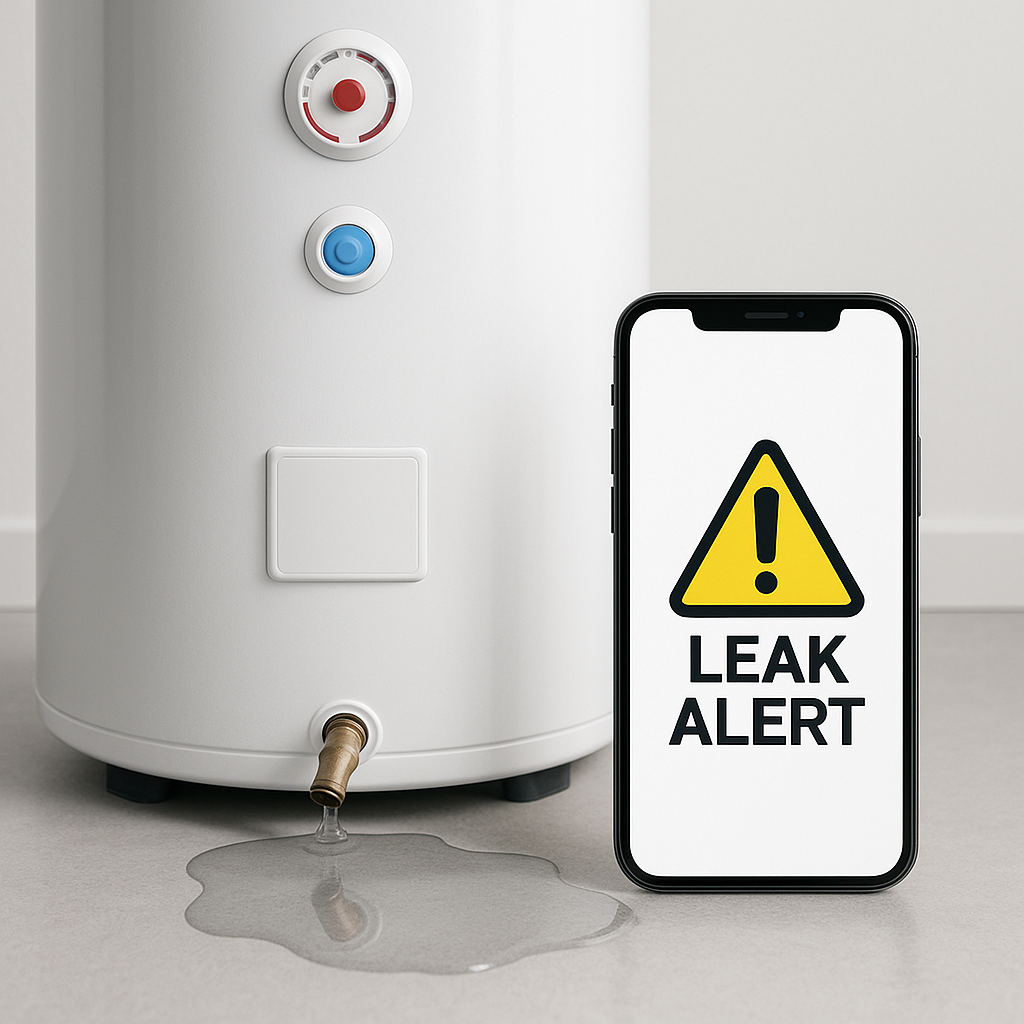Water leaks are a major headache for property managers in multifamily housing. A small drip from a pipe or appliance can quickly turn into costly repairs, unhappy tenants, and insurance hassles. Flood leak sensors are a simple, effective way to catch leaks early and avoid big problems. In this post, we’ll explain how these sensors work, focusing on puck-style sensors, other options like rope sensors, and how they can save you money on insurance. Our goal is to help property and asset managers protect their buildings without getting bogged down in technical details.
How Puck Flood Sensors Work
Puck flood sensors are small, disc-shaped devices you can place in high-risk spots like under sinks, near washing machines, or in utility rooms. They’re easy to install and designed to spot water before it becomes a disaster.
Here’s the simple version of how they work: the sensor has two metal contacts on its base. When water touches both contacts, it creates a connection that triggers an alert. This alert is sent wirelessly to a system that notifies you, via an app, email, or dashboard, so you can act fast, whether it’s shutting off water or calling maintenance.

Wireless Technology: Keeping Sensors Connected
In apartment buildings with many units, sensors need to send alerts reliably, even across multiple floors or buildings. Most systems use a central hub, called a gateway, to collect signals from sensors and send them to the cloud for you to access. For larger properties, repeaters can boost the signal to cover more ground, especially in concrete-heavy buildings where signals might struggle.
One standout technology is LoRaWAN, which lets sensors send alerts over long distances, up to several miles, without needing extra equipment in every unit. It’s perfect for big apartment complexes because it’s reliable, uses little power (so batteries last years), and keeps costs low by reducing the need for multiple gateways.
Another Option: Rope Sensors for Larger Areas
While puck sensors are great for specific spots, rope sensors cover more ground. These are long, flexible cables that can stretch along pipes, baseboards, or around utility rooms. If water touches any part of the rope, it triggers an alert, just like a puck sensor. They’re ideal for places like HVAC rooms or boiler areas where leaks might spread out.
Both puck and rope sensors can work together in the same system, giving you flexibility to protect different areas of your property.

Avoiding False Alarms: Where to Place Sensors
Flood sensors are reliable, but they can sometimes be triggered by things like mopping or spills, leading to false alarms. To avoid this, place sensors in high-risk, low-traffic areas where leaks are most likely but cleaning won’t interfere. Think boiler rooms, HVAC closets, elevator pits, or under appliances in tenant units. Elevating sensors slightly off the floor or using software to filter out brief triggers can also help keep alerts accurate.
Saving on Insurance with Leak Sensors
Flood sensors don’t just prevent damage; they can also lower your insurance costs. Water damage claims are common in multifamily properties and can drive up premiums or deductibles. Many insurance providers offer discounts on premiums or lower deductibles if you have leak detection systems installed. These savings, sometimes 5-10% or more, can add up, especially for large properties.
Every insurance policy is different, so it’s worth talking to your provider to see what’s available. Ask about discounts, what systems qualify, and any paperwork needed. Installing sensors could make your property more attractive to insurers and save you money in the long run.
Protect Your Property with NOWi Sensors
Flood leak sensors are a smart, affordable way to protect your apartment complex from water damage. With puck and rope sensors powered by technologies like LoRaWAN, you can catch leaks early and keep your tenants happy. Plus, potential insurance savings make it a win for your budget.
Ready to safeguard your property? Explore our Flood Monitor solutions at NOWi Sensors. Our systems are designed for easy setup and reliable protection, giving you peace of mind.

